
30-12-2025 16:44
Pascal DucosBonjour,Une anamorphe rose stipitée, très nombre

30-12-2025 17:14
 Bernard CLESSE
Bernard CLESSE
Bonjour à toutes et tous,Pourriez-vous aider Albe

29-12-2025 10:15
Hulda Caroline HolteHello, I found and collected this propoloid ascom

30-12-2025 09:04
Hello.A Pyrenomycete sprouting sparsely but very d

29-12-2025 17:44
Isabelle CharissouBonjour,J'aimerais savoir si d'autres personnes au

12-11-2021 00:03
Lepista ZacariasHi everybody,A week ago in my fiels trip I noticed

29-12-2025 17:12
 Bernard CLESSE
Bernard CLESSE
Bonjour à toutes et tous,Pourriez-vous m'aider à

Hi,
Can anyone help me to identify this parasite on Leotia lubrica?
Conidia spherical, 15-20 µm diam., thick-walLed, with mucous coating. I presume that this coating will result in some ornamentation.
Thanks in advance.
Bernard

looks like (the anamorph of) Hypomyces leotiarum.
Best regards, Lothar
Indeed, Hypomyces leotiicola.
On August 16th 2017 I also found Leotia lubrica, some of these frb's were mummified which I took home for research. Here are some photos of conidiophores, conidia and aleuriospores
Warm regards
François Bartholomeeusen

Hello Francois,
leotiarum or leotiicola - wll, I just looked in Index of Fungi.
Here I find:
H. leotiarum Fayod (I used this name by now), now Sepedonium leotiicola
H. leotiicola Rogerson & Samuels, with this name being actual ...
I am a little bit confused - are there two different species? If yes, o.k., then I used the wrong name by now - all what I found is the fungus of this thread.
But if not - why a new name? Is Fayods name illegitimate?
Best regards, Lothar
Honestly, I'm an amateur mycologist and anamorphs are not my thing. I supported my determination on the key in the Study of Clark T. Rogerson and Gary J. Samuels: Species of Hypomyces and Nectria occuring on discomyctes in Mycologia vol. 77 No. 5 p. 763-783.
I hereby send you some sprintscreens with more explanation.
Have I made a fool of myself or is my conclusion nevertheless correct,
Would you be so kind as to look in to that?
Thanks in advance,
François

Hello Francois,
thank you very much for the file.
I am not convinced and would call the species H. leotiarum what is the earlier name. As it is considered conspecific with the new species, I do not see why the new name is necessary. Maybe it was, but now we have the equality of anamorphous and teleomorphous names ..
Or am I wrong?
Apropos: I would be interested in the whole paper - if somebody has?
Best regards, Lothar

check your mailbox.
Viktorie
the Mycologia article is available here: http://www.cybertruffle.org.uk/cyberliber/59350/0077/005/0763.htm
Best wishes,
Gernot
After measurement of the conidia (5.5-8.1 x 2.49-3.6 µm) and aleuoriospores (10.7 – 13.4 µm) I must conclude that my determination was incorrect.
Either, the mummified Leotia lubrica was not the host or my preparation was contaminated by Hypomyces cervinigenus which I also researched the same day.
Please accept my apologies for my hasty response.
Best regards,
François Bartholomeeusen



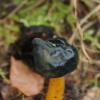
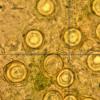
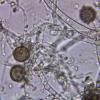
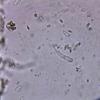
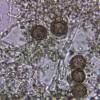
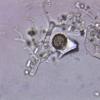
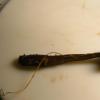
 hypocyces-leotiicola-0001.docx
hypocyces-leotiicola-0001.docx